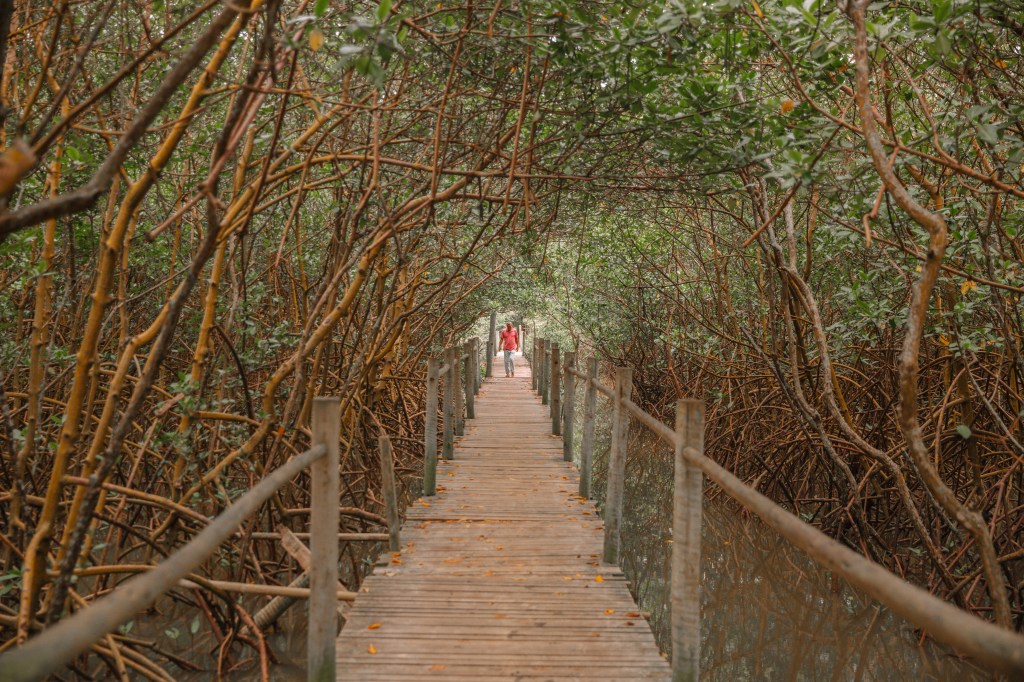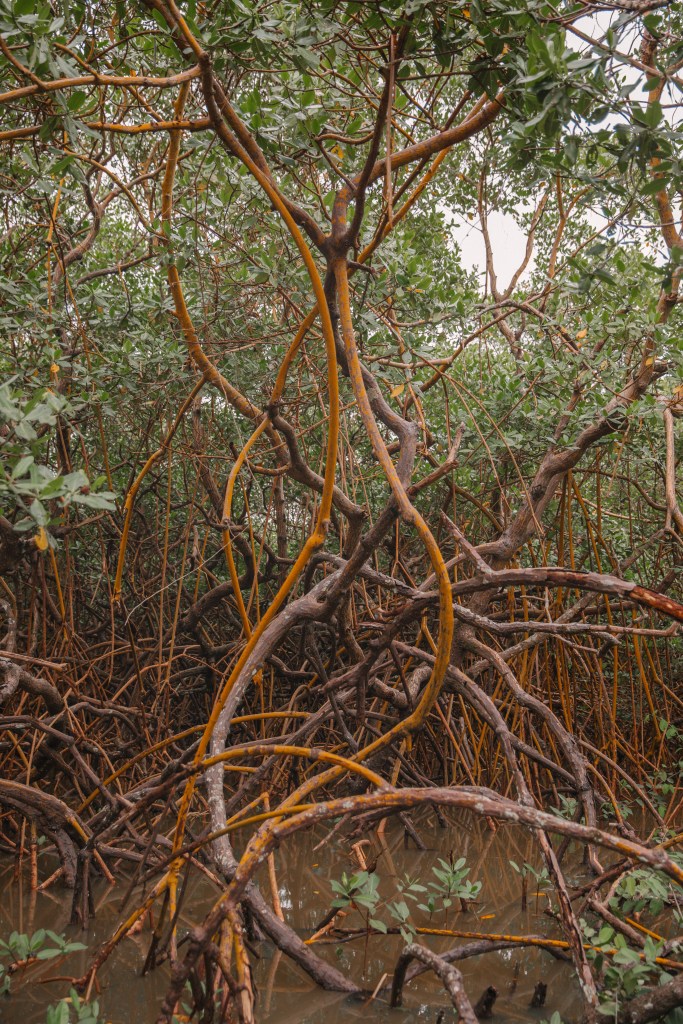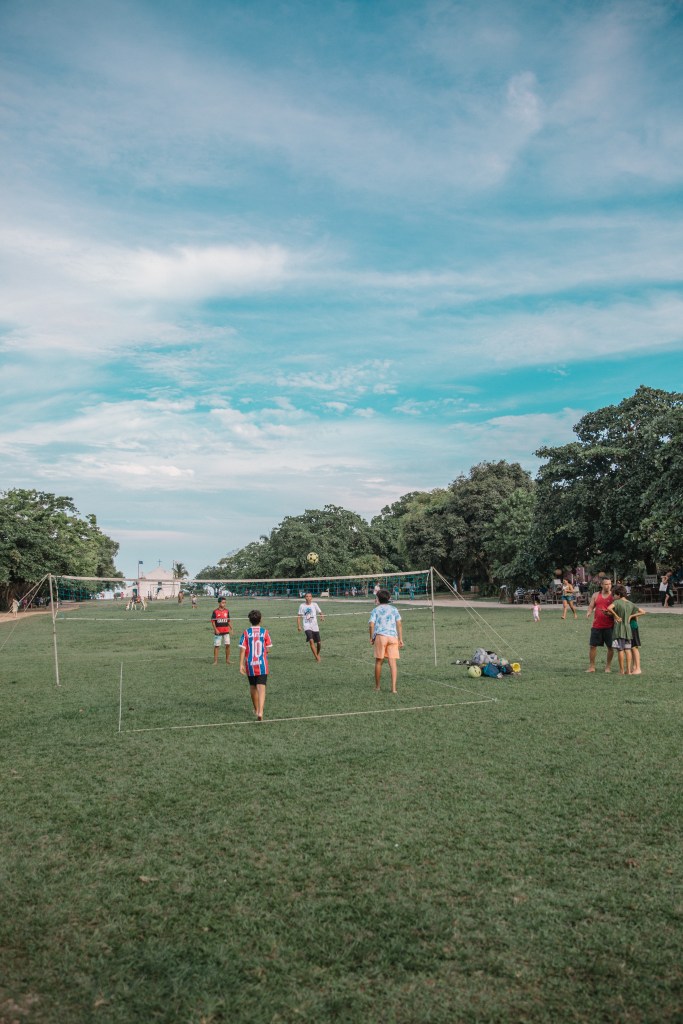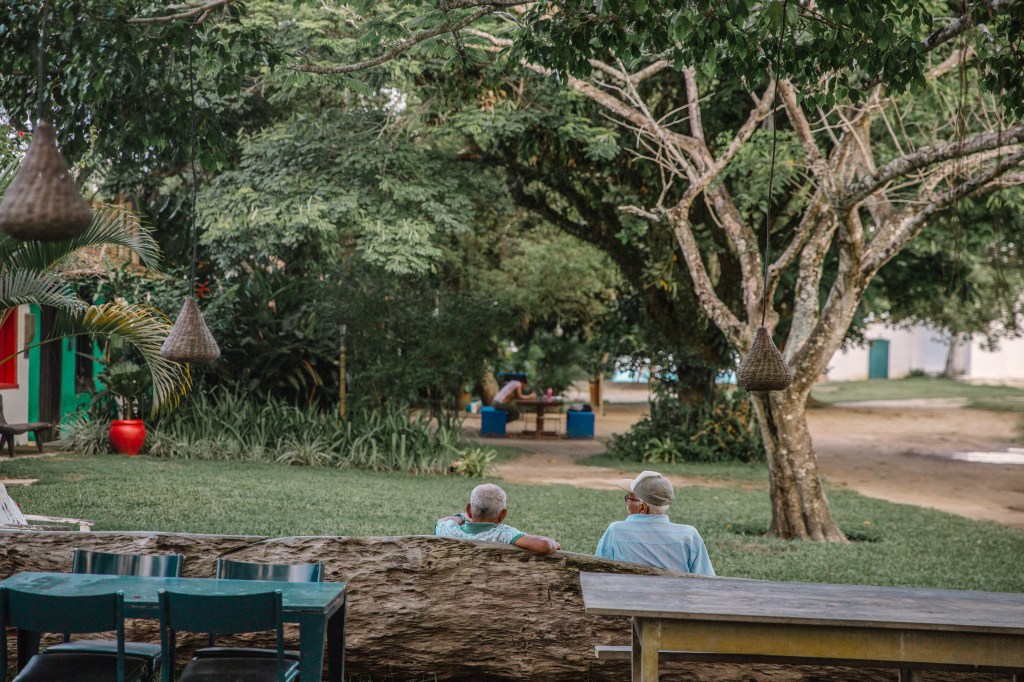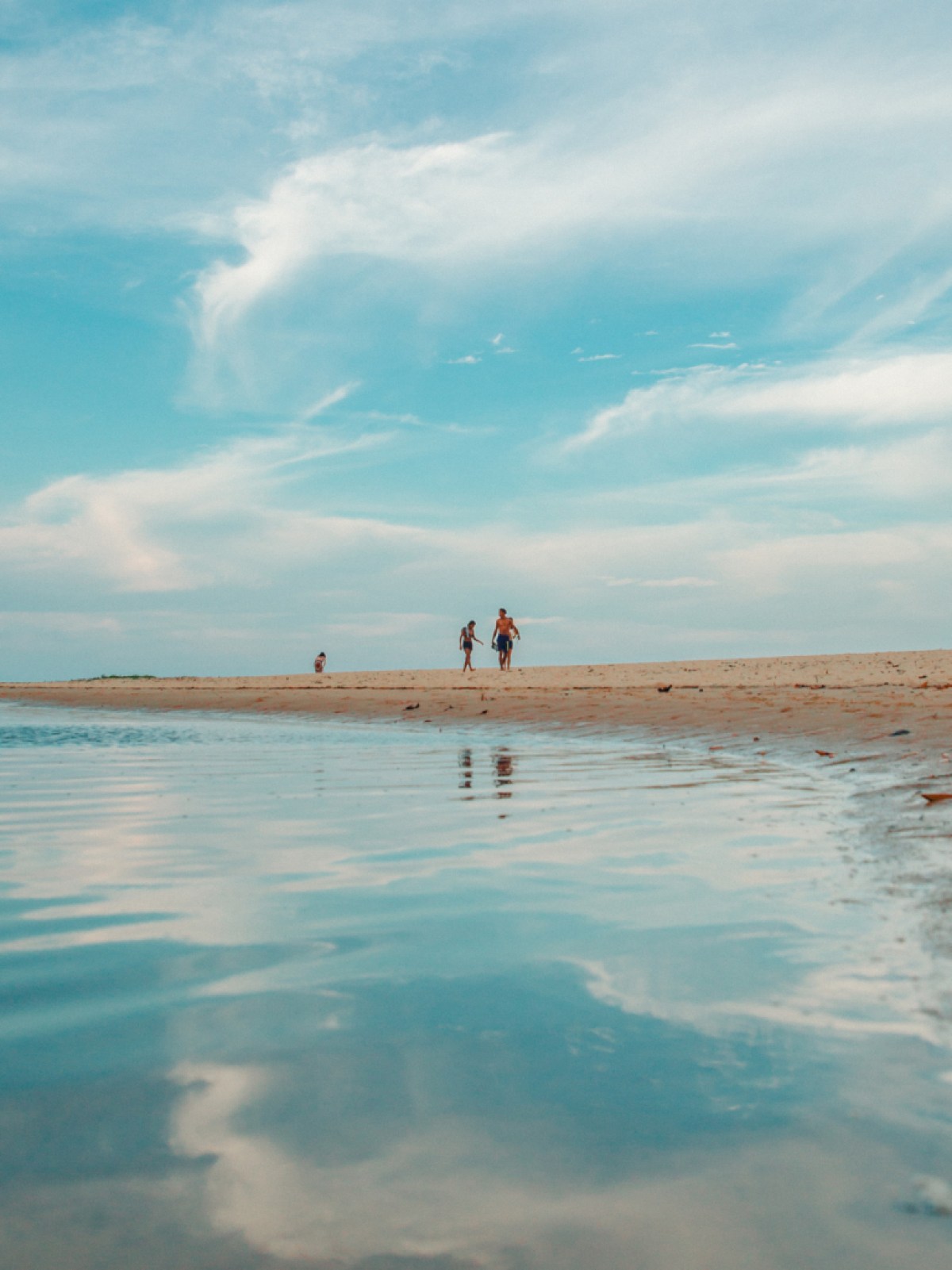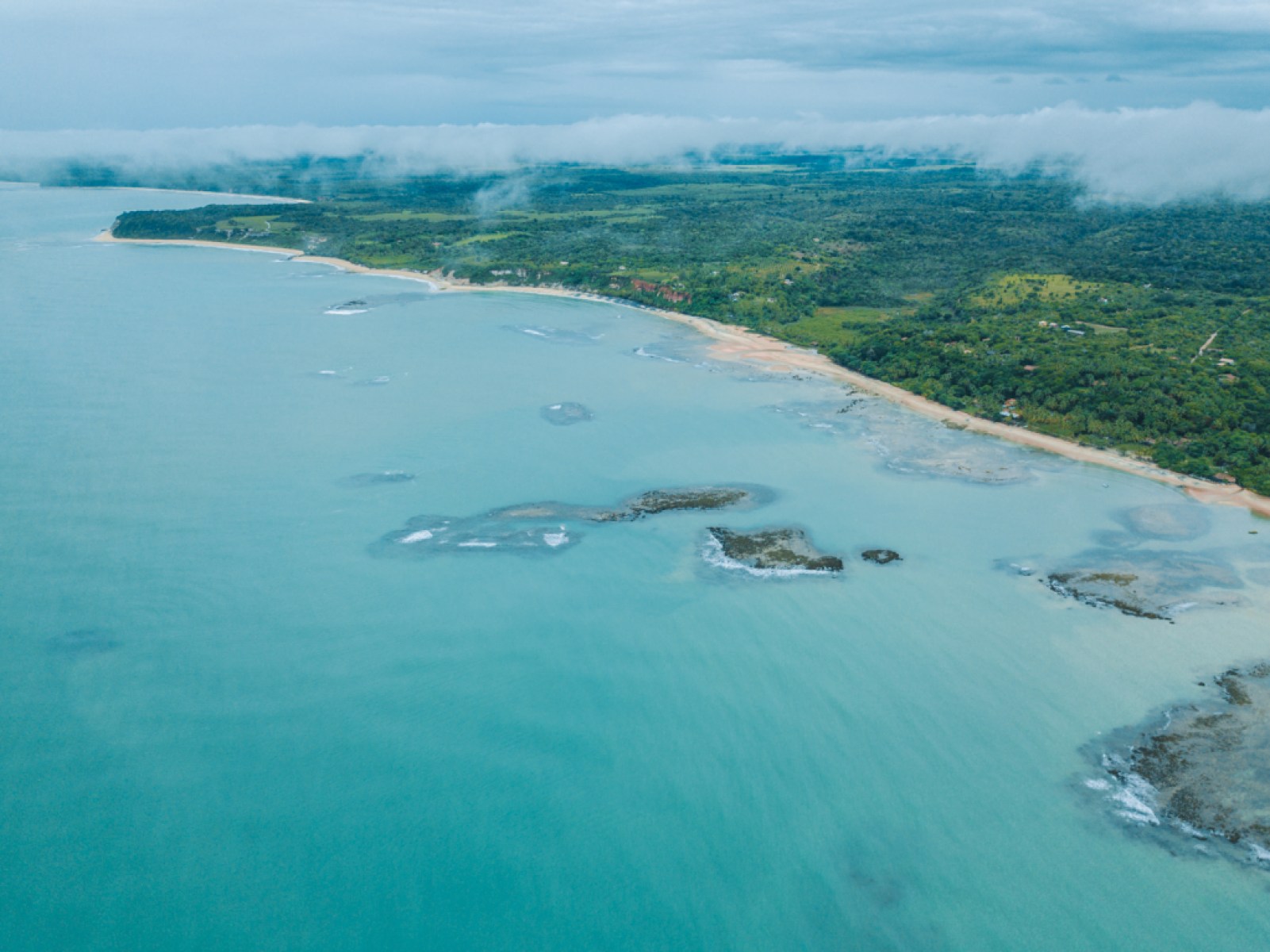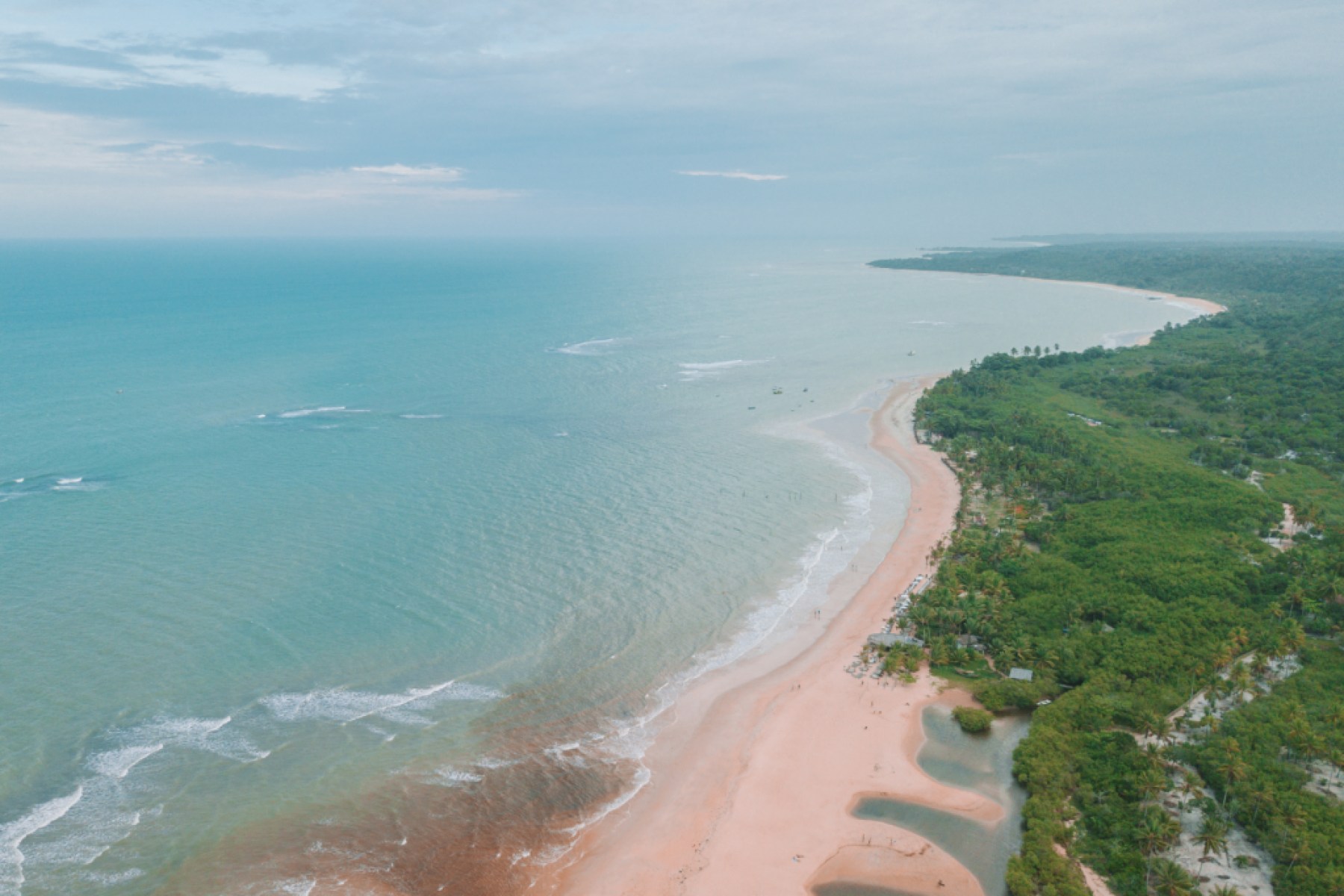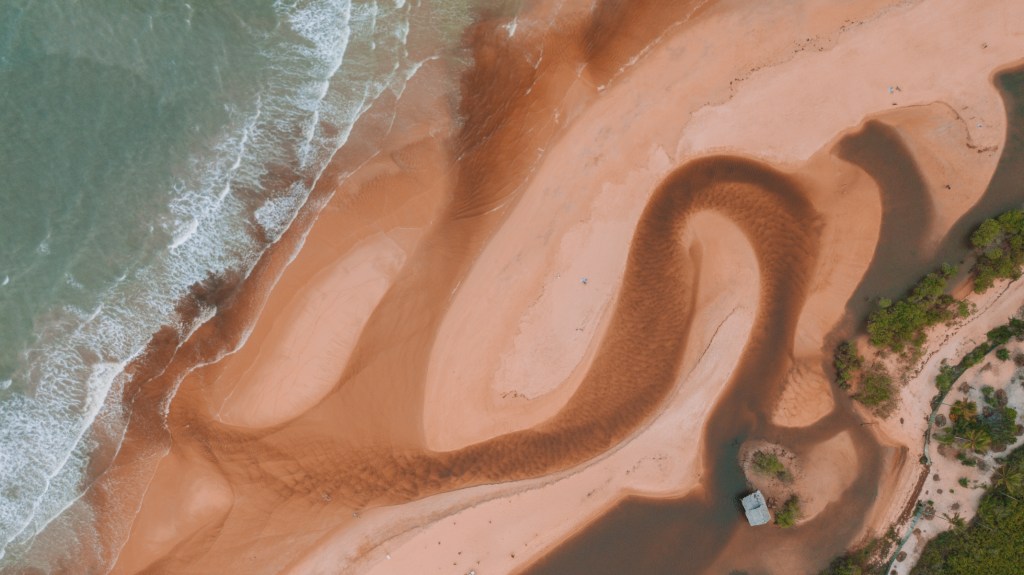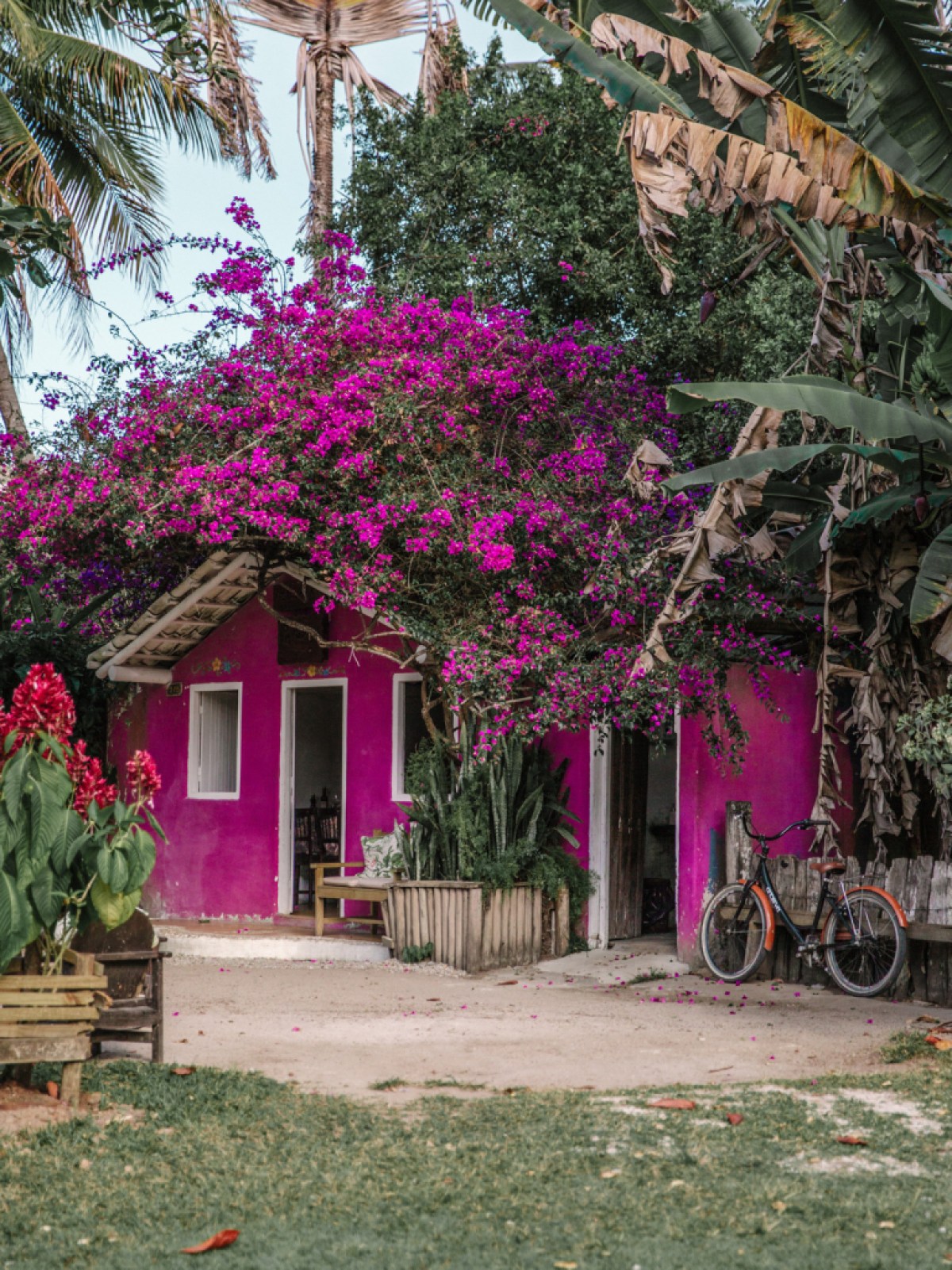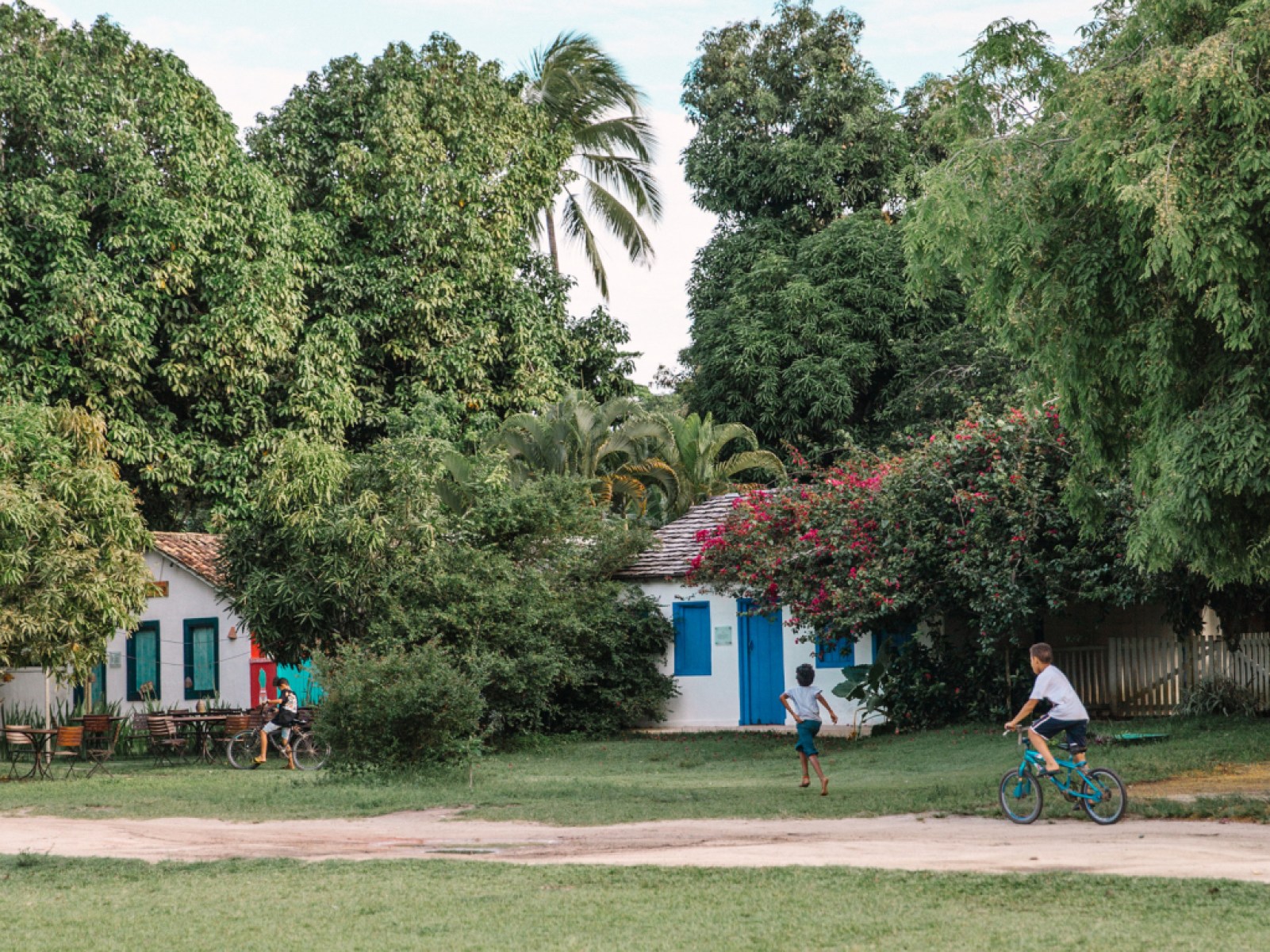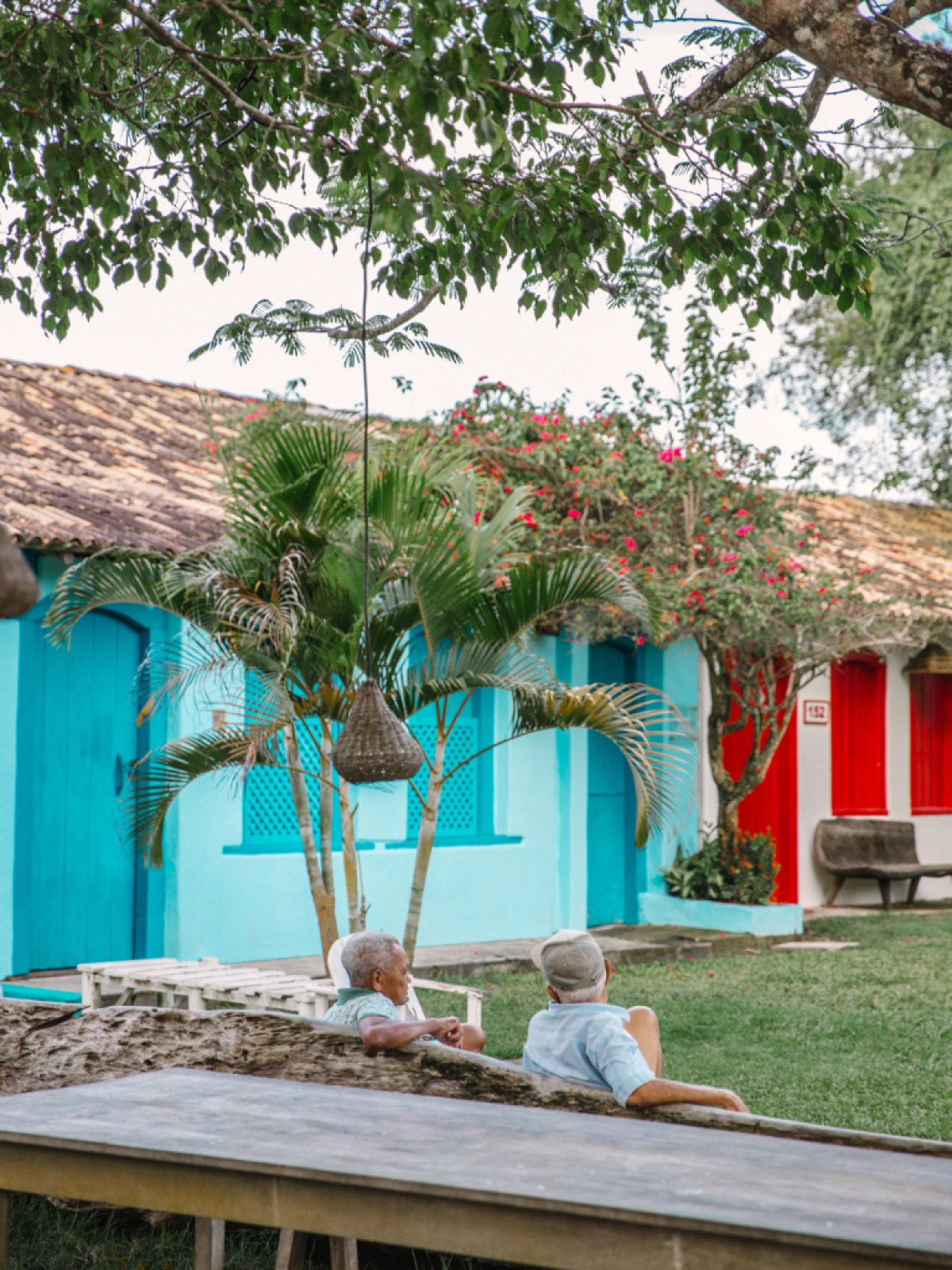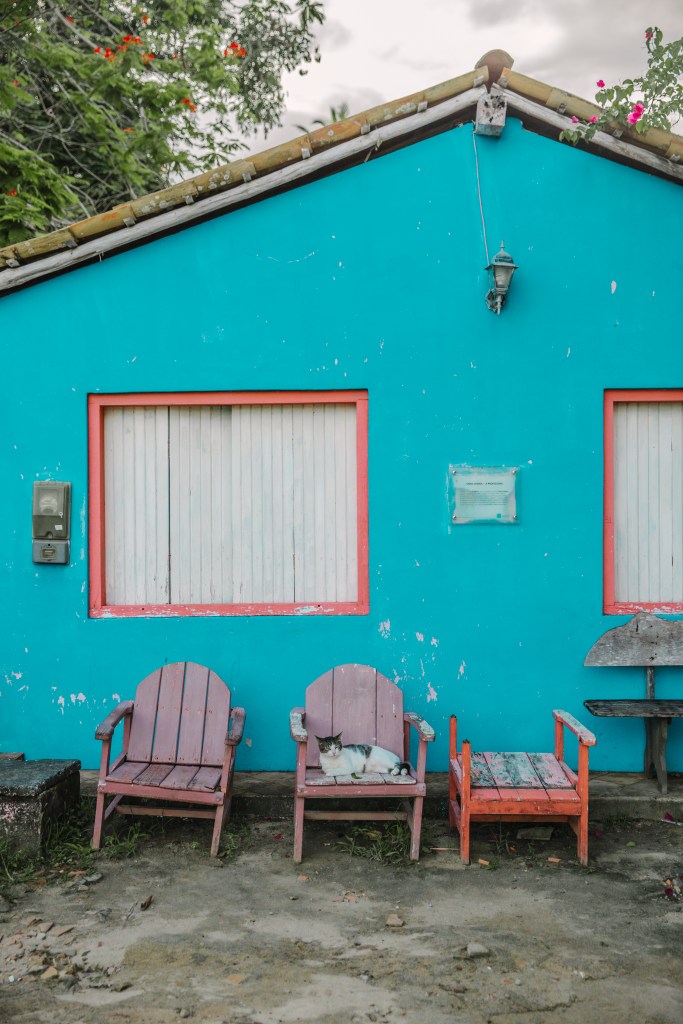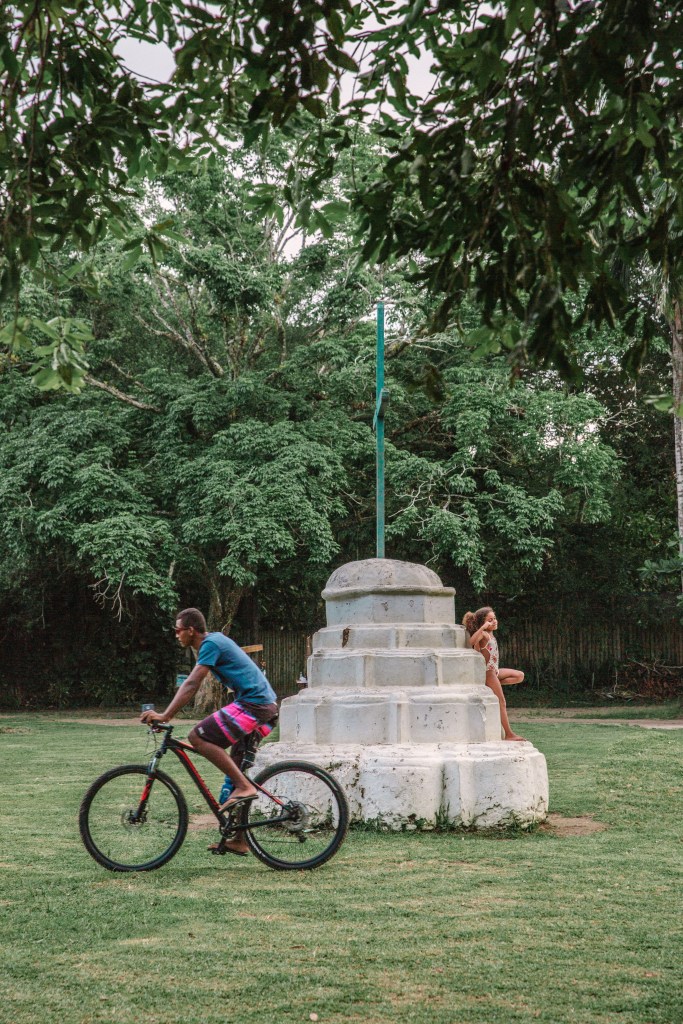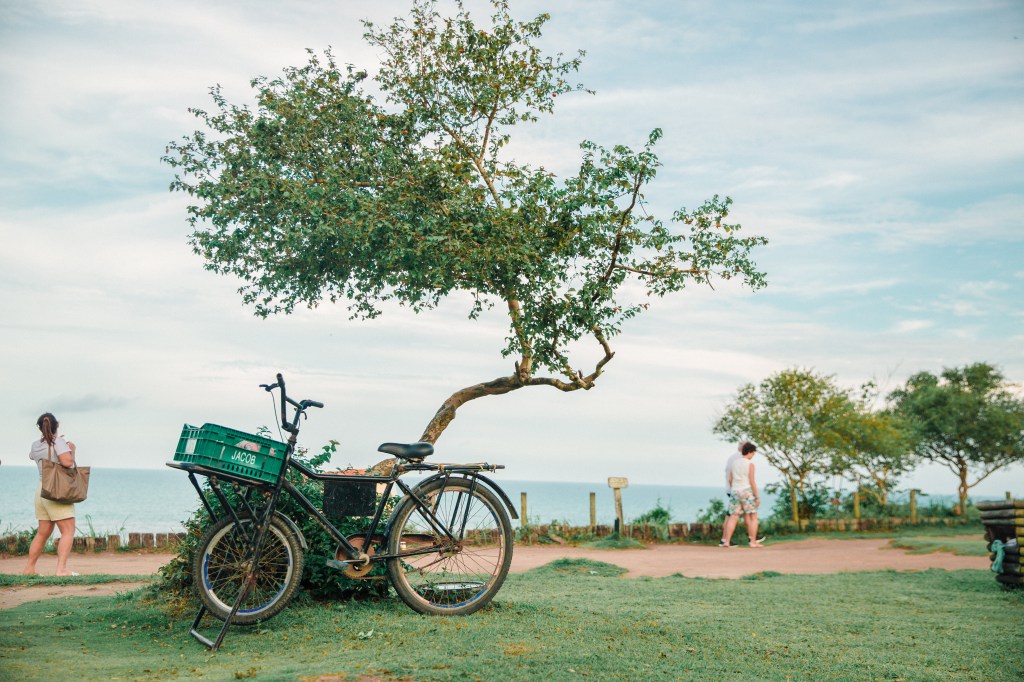Trancoso
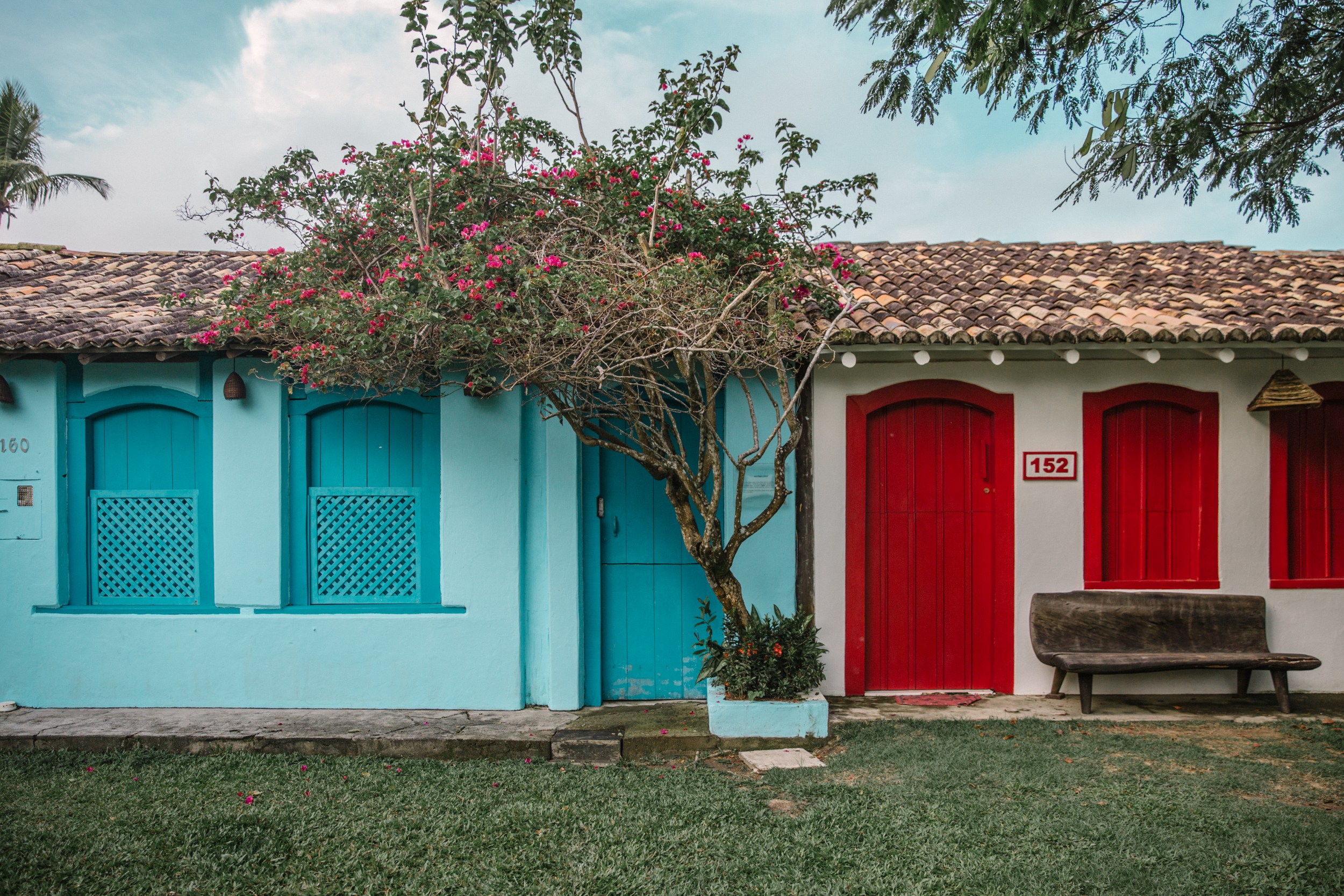
The mood is relaxed; nature, abundant; and the little heritage houses in the center, colorful. The restaurants are fine dining, the beach bars serve coconut in straw baskets, the stores sell designer products and the loyal public, for the most part, comes from afar. If Trancoso could be summed up in one sentence it would be: its charm is the perfect combination of the locals’ simplicity and hospitality with people who came from foreign places and decided not to leave. Located on a forested cliff overlooking clear beaches, Trancoso is a little smaller than the neighboring Arraial and more extensive than Caraíva.
Founded by the Jesuit priests in 1586, it has a curious history: discovered by travelers only in the late 1970s, today Trancoso is known especially for being rustic-yet-contemporary, foot-in-the sand and trendy: a good metaphor is to think that the quiet restaurant serving seafood by day, with tables and cushions under huge trees outside, can turn into a vibrant dance floor at night.
The most famous square in Brazil
One of the most charming squares in the country, the Square of Trancoso is a wide terrain set around the famous 17th century church. On its sides are colorful buildings accommodating shops, cafes and restaurants with live music and outdoor tables, most of them with colored lamps hanging from the branches of large almond trees. Life goes by slowly there, between children playing ball in a small field, donkeys and dogs running free, handicrafts and (many) tapioca stands, as well as couples and families, regular customers of the restaurants that serve anything from moqueca to sushi, to Peruvian ceviche and Argentine steaks.
The beaches
People who enjoy long walks will feel right at home: it is about 13 km, for instance, to go from the center of town to Mucugê Beach, in Arraial, walking on the sand. On the other direction, a 17 km route passes through empty beaches such as Itaquena, Patimirim and the beautiful Barra do Rio dos Frades, where the river encounters the sea until it reaches Praia do Espelho (“Mirror Beach”), considered one of the most beautiful and popular beaches in Brazil, with its sea in different shades of green and blue framed by cliffs.
Trancoso far from the sea (and with “its back” to there)
It is also possible to enjoy the outskirts of the city further away from the sea, on speedboats, kayak rides or stand up paddle on Trancoso River. The indigenous culture, very present in day-to-day life on the whole region, can also be experienced through a visitation to the village of Imbiriba, a community of Pataxós Indians. There, it is also possible to buy their handicrafts, mostly made from using coconut as raw material.
However, the great icon of the village truly is its famous church, originally named Igreja de São João Batista (“Church of Saint John the Baptist”).
Founded by the Jesuits, it was built in 1656 as was customary at the time – with its back to the sea –, and today it is highly sought after for weddings.
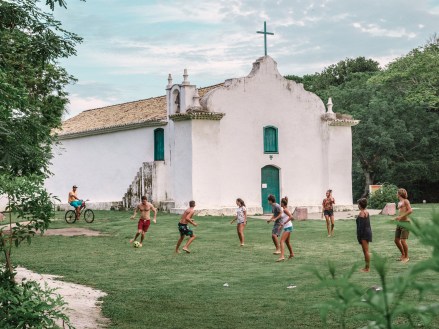
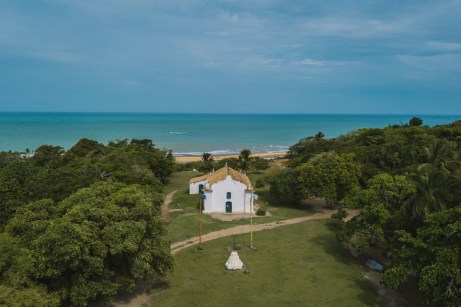
People from all over the world come here particularly to walk down the aisle (since it’s very high demand, it is important to book well in advance). Behind the church there is an observation deck where it is possible to have a panoramic view of the main local beaches. Be sure to go watch the sundown: it is a guaranteed spectacle, regardless of the time of year.

How to get there
– The fastest way is by car: Trancoso is 80 km from Porto Seguro on a paved road; and 40 km from the point of arrival of the ferry, in Arraial D’Ajuda. From Arraial you can also take the old road (total of 26 km, 15 km being of dirt roads);
– It is also possible to take private transfers departing from Porto Seguro airport;
– If you want to take a taxi to the ferry in Arraial you can cross it on foot and from there, take the bus to Trancoso.

